|
|
Help |
| Home - Psychology - Alternative (Books) | |
e99 Online Shopping Mall
|
|
Help |
| Home - Psychology - Alternative (Books) | |
| Back | 81-100 of 100 |
click price to see details click image to enlarge click link to go to the store
| 81. Sexual Assessment: Issues and Radical Alternatives (Issues in criminological and legal psychology) | |
| Paperback: 47
Pages
(1986-02-15)
Isbn: 0901715522 Canada | United Kingdom | Germany | France | Japan | |
| 82. Psychology of adjustment and the learning-disabled student: Alternative techniques for teaching psychology to learning-disabled students in the university (The HELDS Project series) by Darwin Joseph Goodey | |
| Unknown Binding: 18
Pages
(1982)
Asin: B0006YD0M0 Canada | United Kingdom | Germany | France | Japan | |
| 83. Alternative anlysis for team psychology and training certificate by Kathie R Martin | |
| Unknown Binding: 50
Pages
(1995)
Asin: B0006QDAE6 Canada | United Kingdom | Germany | France | Japan | |
| 84. The neurotic alternative (Guild of Pastoral Psychology. Lectures; no.98) by William P Kraemer | |
| Unknown Binding: 18
Pages
(1958)
Asin: B0000CK7E0 Canada | United Kingdom | Germany | France | Japan | |
| 85. On the optimum number of alternatives at a choice point (Technical reports / Michigan Mathematical Psychology Program) by Amos Tversky | |
| Unknown Binding: 10
Pages
(1964)
Asin: B0007HWDGA Canada | United Kingdom | Germany | France | Japan | |
| 86. The functions of fiction: The psychology of creating alternative worlds (Honors thesis/project) by Adrian Janit | |
| Unknown Binding:
Pages
(2000)
Asin: B0006RI8FQ Canada | United Kingdom | Germany | France | Japan | |
| 87. Autismo y Psicosis Infantiles/ Autism and Juvenile Psycosis: Una Alternativa Para Su Tratamiento/ An Alternative for Its Treatment (Spanish Edition) by Margriet Boom Diaz De Leon | |
| Paperback: 185
Pages
(2006-07-30)
list price: US$26.95 Isbn: 9682474582 Canada | United Kingdom | Germany | France | Japan | |
| 88. Buddhist Psychology: The Foundation of Buddhist Thought by Geshe Tashi Tsering | |
 | Paperback: 192
Pages
(2006-10-20)
list price: US$14.95 -- used & new: US$6.17 (price subject to change: see help) Asin: 0861712722 Average Customer Review: Canada | United Kingdom | Germany | France | Japan |
|
Editorial Review Product Description Customer Reviews (4)
| |
| 89. Healing East and West: Ancient Wisdom and Modern Psychology | |
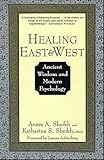 | Paperback: 590
Pages
(1996-09)
list price: US$95.00 -- used & new: US$73.74 (price subject to change: see help) Asin: 0471155608 Canada | United Kingdom | Germany | France | Japan |
|
Editorial Review Product Description "A magnificent volume that blends both intellectual and spiritual approaches to create a new vision of healing. It belongs in the libraries of all those interested in the healing process."—Joan Borysenko, Ph.D., President, Mind/Body Health Sciences, Inc. "An excellent resource for information regarding the variety of healing modalities. The contributors write with expertise and present with inspiration the necessary information. Science, spirituality, and mysticism are all well-represented in this manual of healing."—Bernie Siegel, M.D., Author of Love, Medicine, and Miracles. "A richly interesting and enjoyable book that successfully integrates a multicultural approach to healing . . . a substantial book, well-researched and clearly written by its many contributors."—Complementary Medical Research. "A solid contribution to a dialogue that is rapidly coming to attract the attention . . . of the mainstream of the Western healing professions. It should help to convince many . . . that this is a cross-cultural collaboration that they too should take seriously." —British Journal of Psychology. "This is the most comprehensive effort at bringing together the achievements of the Eastern and Western healing traditions . . . a far-reaching integration of the best of both worlds."—Karan Singh, Ph.D., Author of The Religions of India. | |
| 90. Complementary and Alternative Therapies for Epilepsy | |
 | Hardcover: 330
Pages
(2005-06-30)
list price: US$95.00 -- used & new: US$76.00 (price subject to change: see help) Asin: 1888799897 Average Customer Review: Canada | United Kingdom | Germany | France | Japan |
|
Editorial Review Product Description Customer Reviews (3)
| |
| 91. Energy Psychology: Self-Healing Practices for Bodymind Health by Michael Mayer Ph.D. | |
 | Paperback: 480
Pages
(2009-04-28)
list price: US$19.95 -- used & new: US$12.24 (price subject to change: see help) Asin: 1556437242 Average Customer Review: Canada | United Kingdom | Germany | France | Japan |
|
Editorial Review Product Description Customer Reviews (5)
| |
| 92. The Powerful Bond between People and Pets: Our Boundless Connections to Companion Animals (Practical and Applied Psychology) by P. Elizabeth Anderson | |
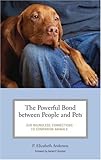 | Hardcover: 280
Pages
(2008-01-30)
list price: US$44.95 -- used & new: US$35.96 (price subject to change: see help) Asin: 0275989054 Average Customer Review: Canada | United Kingdom | Germany | France | Japan |
|
Editorial Review Product Description An engaging and science-based examination of people and companion animals, this book shows how their lives are inextricably intertwined, what the impact has been on culture and on society, the reasons people go to great lengths to care for and protect their beloved animals, and why the grief when they are lost is so profound and unique. Anderson, a longtime animal welfare advocate, also shows how we conversely ignore the suffering of some animals. She explains what can be done about this dissonance and what the future holds. Beginning with the history of the human-animal bond, which dates to the Paleolithic era, Anderson takes us through the evolution of domestication and surveys companion animals around the world. The biological, behavioral, and psychosocial bases of the relationship between humans and their companion animals are examined, as is whether the companion animals are adversely affected as they are embedded into the human world. The expansive and unusual therapeutic benefits of companion animals is included as well, as are ways they are protected, ranging from medical efforts to legal battles over wills and custody. Anderson incorporates news stories, interviews, and the latest research showing the psychology behind this relationship that scientists have dubbed the human-companion animal bond. Research shows why these mainly nonverbal creatures can become surrogate children, friends, and even therapists of a sort. Current studies focused on animal intelligence, loyalty, and sensitivity are shared here. Those same qualities are shown at work in new and vital roles for companion animals, from animals in therapeutic settings to dogs teamed with soldiers, police officers, and rescuers. Anderson also explains how losing a pet can shake or shatter our mental stability, and how and why that has led to public services, funerals, and cemeteries for pets. The book closes with a discussion of the dissonance between our indulgence of some companion animals, while the suffering and maltreatment of others is ignored. Customer Reviews (3)
| |
| 93. The Psychology of the Esoteric by Shree Rajneesh | |
 | Hardcover: 184
Pages
(1994-01)
list price: US$12.95 -- used & new: US$124.58 (price subject to change: see help) Asin: 3893381236 Average Customer Review: Canada | United Kingdom | Germany | France | Japan |
|
Editorial Review Product Description Customer Reviews (1)
| |
| 94. Complementary and Alternative Medicines : Knowledge in Practice | |
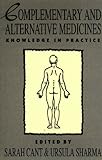 | Paperback: 197
Pages
(1996-01)
list price: US$29.50 -- used & new: US$20.00 (price subject to change: see help) Asin: 1853433527 Canada | United Kingdom | Germany | France | Japan |
|
Editorial Review Product Description | |
| 95. Schools for Growth: Radical Alternatives To Current Education Models by Lois Holzman | |
 | Paperback: 168
Pages
(1997-10-01)
list price: US$28.95 -- used & new: US$28.95 (price subject to change: see help) Asin: 0805823573 Canada | United Kingdom | Germany | France | Japan |
|
Editorial Review Product Description | |
| 96. Mythologems: Incarnations of the Invisible World (Studies in Jungian Psychology by Jungian Analysts) by James Hollis | |
 | Paperback: 158
Pages
(2004-05)
list price: US$25.00 -- used & new: US$14.67 (price subject to change: see help) Asin: 1894574109 Average Customer Review: Canada | United Kingdom | Germany | France | Japan |
|
Editorial Review Product Description Customer Reviews (1)
| |
| 97. Psychoanalysis and Spiritual Psychology: Five Lectures Held in Dornach and Munich Between February 25, 1912, and July 2, 1921 by Rudolf Steiner | |
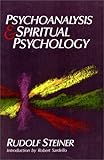 | Paperback: 143
Pages
(1990-12)
list price: US$12.95 -- used & new: US$155.17 (price subject to change: see help) Asin: 088010290X Canada | United Kingdom | Germany | France | Japan |
| 98. Alternatives to Cognition: A New Look at Explaining Human Social Behavior by Christina Lee | |
 | Hardcover: 172
Pages
(1997-09-01)
list price: US$52.50 -- used & new: US$46.29 (price subject to change: see help) Asin: 0805826548 Canada | United Kingdom | Germany | France | Japan |
|
Editorial Review Product Description | |
| 99. ADHD Alternatives: A Natural Approach to Treating Attention Deficit Hyperactivity Disorder by Aviva J. Romm C.P.M., Tracy Romm Ed.D. | |
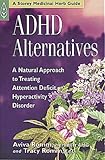 | Paperback: 128
Pages
(2000-07-01)
list price: US$12.95 -- used & new: US$2.50 (price subject to change: see help) Asin: 1580172482 Average Customer Review: Canada | United Kingdom | Germany | France | Japan |
|
Editorial Review Product Description Customer Reviews (4)
| |
| 100. The Psychology of the Body (LWW Massage Therapy and Bodywork Educational Series) by Elliot Greene, Barbara Goodrich-Dunn | |
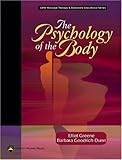 | Paperback: 365
Pages
(2003-08-04)
list price: US$49.95 -- used & new: US$37.50 (price subject to change: see help) Asin: 0781737826 Average Customer Review: Canada | United Kingdom | Germany | France | Japan |
|
Editorial Review Product Description Customer Reviews (3)
"Our entire mind is reflected in the body.Not only our conscious thoughts, but also our unconscious anxieties, insecurities, desires and other feelings, beliefs, thoughts and values are reflected in our bodies?. The activity in the unconscious ranges from material that we either cannot or do not need to be aware of, to material of which we do not want to be aware."(Page 101). This is the central issue.Mental repression and resistance can hold uncomfortable or unwanted thoughts and feelings at bay from conscious awareness.However, feelings are an integral part of being human and will find bodily expression even when we use our minds to control bodily impulses and functions or feelings we think are negative (page 98). If held in resistance, feelings can exhibit in different ways outside our awareness and this shows in our bodies.Understanding how our psychological state is expressed in the body and how working with the body affects our psychological state as well as how our work is affected by the interaction between the mind and body is imperative for massage therapists. This book also addresses the problem of the massage therapist who does not know what to do or feels uneasy when a client has an emotional release.The massage venue is a logical place to experience and move through emotional expression because the somatic practitioner is releasing tension and working into the soft tissue, which sometimes also leads naturally to release and processing of held emotion. However, the therapist?s discomfort may reflect societies? perplexity with emotional expression, concluding, "it's bad, it's wrong, it's too much, it will lead to insanity, etc." This discomfort might cause the massage therapist to have an inappropriate reaction or "invalidating response" (page 114) to the client, which can reinforce the client's blocking of his or her feelings.For example, if the massage therapist is uncomfortable or impatient with emotional expression, then that is what they impress on clients. They either discourage the client from a richer relationship with self or they loose the client to a more empathetic body worker. The other problem regarding dealing with emotional release is the massage therapist who responds by doing too much.The book explains how the massage therapist can make a balanced response that avoids either too much or too little caution. A major point of this book is the boundary between psychotherapy and massage therapy and explaining how the massage therapist can remain on the correct side of this boundary.For example, one distinction the authors identify is the difference between processing and handling psychological material (page 69). The massage therapist needs to learn to handle emotional expression appropriately when it occurs as a secondary and spontaneous result of the massage. This allows clients to have their emotion without being placated, frowned upon or rejected.A critical issue is that the massage therapist neither induces the emotional reaction nor processes the psychological material.The authors keep to this subject with good ordering and progression of material, practical exercises, and exacting description. Material ranges from information about the philosophy surrounding body/mind issues, the psychological implications of touch and physical sensation, psychological terms and mental health conditions that are defined without jargon or technical wording, the dynamic underlying therapist/client relationship, and the interrelationship between chronic psychological and physical patterns.In addressing psychological issues, they carefully explain the power differential between therapist and client and point out pitfalls, such as the therapist?s psychological inflation from the dramatic work and the client's regard; in other words the attractiveness of the "healer archetype."As the authors weave in and out of this material they never loose sight of exampling what is inside and outside of the massage therapist?s scope of practice. Of special importance to massage therapists is the description of the difference between armoring and tension. Tension can dissolve with bodywork but armoring is embedded within the body, particularly the nervous system and corresponding dynamic psychological defenses -- an important distinction.The authors? discussion of the different types of tissue and examples of working with different patterns are detailed and particularly clear.Goodrich-Dunn and Greene approach the subject of the psychological connection with the body?s tissue by defining and discussing the concepts of grounding, bounding and charge. The practical exercises throughout the book give space for the reader to ask themselves some questions and personalize the workbook to their practice.Exercises include a list of emotions and how you and your family members relate to them, an in depth list of boundary issues and questions about personal beliefs. It is also helpful that there are extensive resources for various subjects such as situations that may require referral, understanding mental health conditions and disorders, and explanations of the various mental health care professions. The authors' style is no-nonsense and to the point, yet compassionate, particularly when discussing the paradox of therapeutic change and the characteristics of personality types.They never loose sight of the humanity involved in our profession and the responsibility with which we are entrusted. "The most important tool for distinguishing between projection and true perception is self knowledge." (Page 42). ... Read more | |
| Back | 81-100 of 100 |